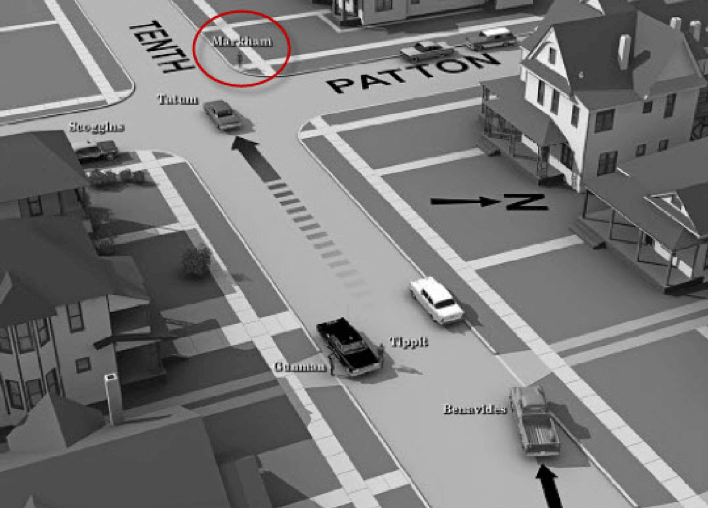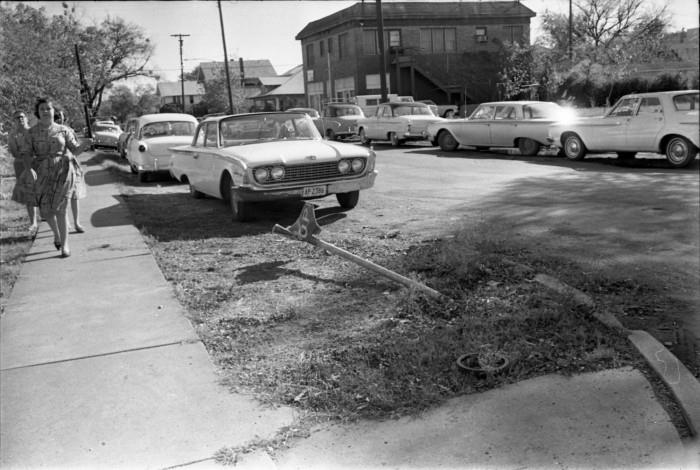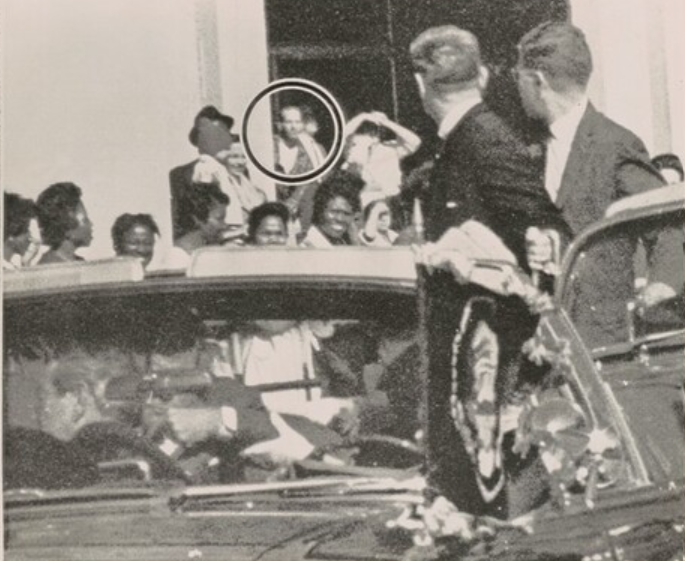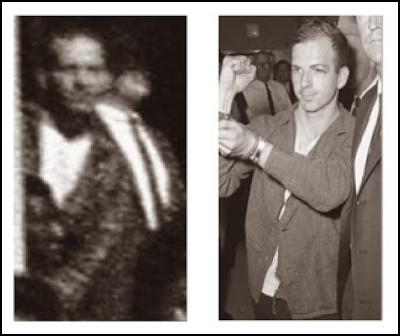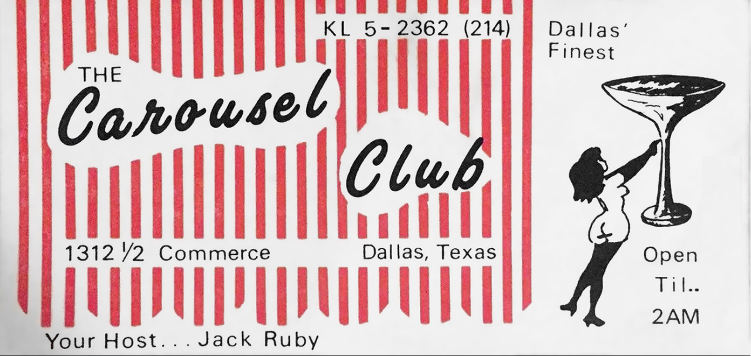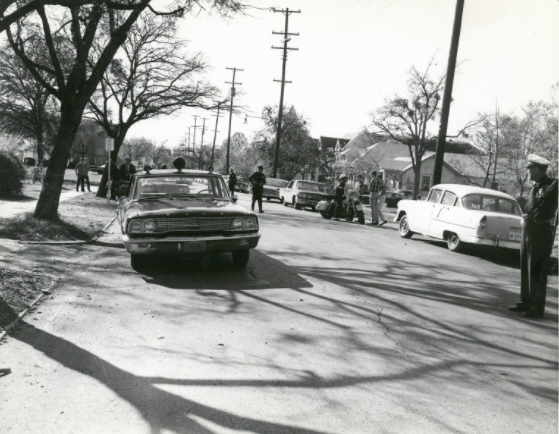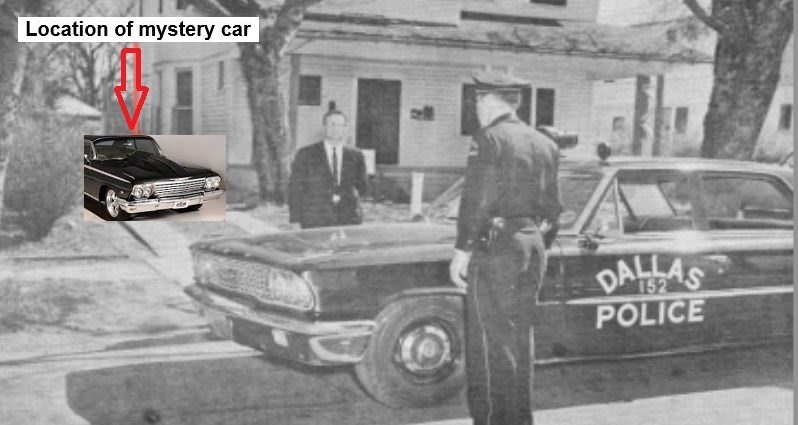Introduction
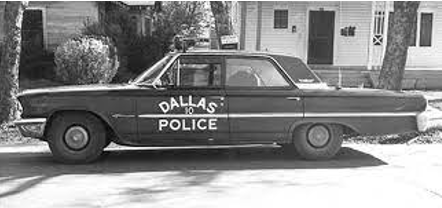
The horrific events of that unforgettable weekend would shake our nation to its core and usher in the rest of what would arguably be the most tumultuous and pivotal decade in American history. Sixty years later, the festering, burning question remains…did Oswald do it? Dallas Police and the Dallas District Attorney’s office were fully preparing to try Lee Oswald and Oswald alone for the crimes. After the suspect’s murder while in police custody, the subsequent Warren Commission, empaneled by incoming President Lyndon Johnson, found in the following year that Lee Oswald alone had murdered both President Kennedy and Officer Tippit with no assistance from any accomplices…foreign or domestic.
During the 1970s, as public doubts about the veracity of the so-called Warren Report grew, Congress decided to take a second look at the controversial, problem-filled case. After having been locked away in a vault for some 11+ years, a copy of the “Zapruder” home movie of the assassination was finally shown in 1975 on ABCs’ Good Night America to a shocked national audience. Rumors of shots being fired from the legendary “Grassy Knoll” to the front of the Presidential limousine had persisted since the day of the assassination. Now, as citizens watched the home movie footage on TV for the first time, they could clearly see for themselves the President’s head being thrown violently back and to the left. The Zapruder film seemed to plainly indicate that one or more of the shots had come from the front. Not solely from the rear and the Texas School Book Depository where Lee Oswald had allegedly fired a cheap, misaligned World War II surplus rifle from the sixth floor. As a result of the political pressure that ensued, the House Select Committee on Assassinations (HSCA) was convened in 1976 to study the JFK assassination…as well as the murder of Martin Luther King, Jr.
The conclusion of the HSCA members and their investigation was that there had been a "probable conspiracy" in the JFK assassination. But they were unable to determine its nature or participants (other than that Oswald was still deemed to have fired all the successful shots). Regarding Tippit, the HSCA still believed that Lee Oswald had gunned down the officer near 10th & Patton in Oak Cliff. This was likely because of the appearance of a new Tippit witness, Jack Tatum, whose testimony helped to bolster the heavily damaged credibility of the Warren Commission’s star witness in the Tippit case, waitress Helen Markham.
In the years immediately following the assassination, some 87% of the American public believed that Lee Oswald had acted alone. Today, over 60% believe that JFK and Officer Tippit were killed as part of a conspiracy. As more details and statements have been released in the new millennium, a growing number of citizens, though still a minority, have come to believe that Lee Oswald was being truthful when he claimed he hadn’t shot anyone that day — that the New Orleans-born young man was “just a patsy” in this unthinkable national nightmare.
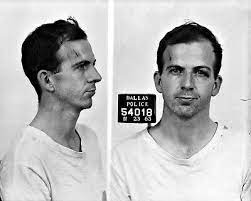
- Two eyewitnesses saw the Tippit shooting. Seven more witnesses heard the shots and saw the killer fleeing the Tippit murder scene with gun in hand. All nine witnesses positively identified Lee Harvey Oswald as the man they saw.
- A .38 Smith & Wesson revolver was purchased by Oswald and was in his possession at the time of the suspect’s arrest in the Texas Theater in Oak Cliff — less than a mile from the location where Tippit was slain.
- Lee Oswald’s “Eisenhower” style jacket was found along the path of the gunman’s flight.
- The four .38 caliber cartridge cases (shells) found at the scene of the Tippit shooting were fired from the revolver in Oswald’s possession to the exclusion of all other weapons.
This article will deal with each accusation and show how the preponderance of evidence now points to the probable innocence of Lee Oswald in the murder of Officer Tippit.
Part 1: The Witnesses
The eyewitness testimony against Lee Oswald for the murder of JD Tippit was never as strong nor as solid as the authorities led the public to believe. As Tippit researcher and author Joseph McBride has so cogently stated, “the eyewitness evidence is so contradictory that it seems as though there were two sets of witnesses” at 10th & Patton in Oak Cliff on November 22. 1963. One set of witnesses, those who got to testify for the Warren Commission and later HSCA, said Lee Oswald was the man they saw at or near the Tippit murder scene with a gun. However, witnesses who were largely ignored by Dallas Police and the later subsequent federal investigations told an entirely different story. These individuals saw at least two suspicious men escaping the scene of the murder, with none of those persons being positively identified as Oswald.
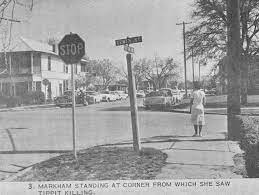
New Orleans District Attorney Jim Garrison, one of Lee Oswald’s earliest and most vociferous defenders, had long believed that the plot to kill Kennedy had been hatched in his city during the summer of 1963, and investigated accordingly. In October 1967, Mr. Garrison granted an interview to Playboy Magazine, during which he noted, “The evidence we’ve uncovered leads us to suspect that two men, neither of whom was Oswald, were the real murderers of Tippit.”
After DA Garrison’s interview hit the newsstands, the magazine received the following anonymous letter from Dallas:
I read Playboy’s Garrison interview with perhaps more interest than most readers. I was an eyewitness to the shooting of policeman Tippit in Dallas on the afternoon President Kennedy was murdered. I saw two men, neither of them resembling the pictures I later saw of Lee Harvey Oswald, shoot Tippit and run off in opposite directions. There were at least half a dozen other people who witnessed this. My wife convinced me that I should say nothing, since there were other eyewitnesses. Her advice and my cowardice undoubtedly have prolonged my life — or at least allowed me now to tell the true story…”
In my July 8, 2019 article Why Officer Tippit Stopped His Killer published on this web site I went into considerable detail in explaining the difficulties presented by the witness testimony in the Tippit case. For the sake of brevity, I will only summarize my findings here. The devil, of course, is often in the details, and so interested readers should go to this article.
First, it should be realized that many misidentifications have contributed to reversals eyewitness misidentification overwhelming majority of wrongful convictions, later overturned by post-conviction DNA testing. According to one peer-reviewed scientific study cited by the Innocence Project,the ability to correctly identify a suspect in a crime drops off dramatically once the witness’s location is 25 or more feet from the subject. After 25 feet, facial perception diminishes, and diminishes rapidly.At about 150 feet, accurate face identification for people with normal vision drops to zero.
Domingo Benavides
The only witness who was possibly within 25 feet of the Tippit shooting was Domingo Benavides, a young man driving west on E. 10th Street in a pickup truck. Benavides saw Tippit talking to a young man across the hood of his patrol car. As Benavides was almost even with the stopped police car and preparing to pass, he heard three close by gunshots. Benavides ducked down behind his dashboard, turned his truck into the far curb, and hid out of sight for several seconds. He did not actually see the shooting. When Benavides finally peeked over his dashboard, he observed the killer walking west towards Patton Avenue. Benavides waited until the killer was well out of view before exiting his vehicle and checking on Officer Tippit. Tippit appeared to be deceased. Benavides would retrieve two shells discarded by the killer who had cut across the lawn on the corner property and fled south on Patton Avenue. Benavides told police he could not identify the shooter because the witness basically only saw the suspect from behind as he escaped. Benavides did not participate in any of the downtown lineups. The witness did note, however, that the suspect had a squared off haircut that ended on the back of the neck above the “Eisenhower” jacket. Photographs from that day clearly show that Oswald’s hair was tapered in the back and would have extended below the neckline on a similar jacket as seen.
Helen Markham
Helen Markham was the so-called “star” witness in the Tippit case as she was the only witness on the day of the murder to claim having seen the actual shooting. Mrs. Markham is “legendary” in this case because her testimony and statements were so confused, contradictory, and downright bizarre. Markham had been walking south on Patton Avenue — on her way to catch a bus on Jefferson Boulevard that would take her to her waitressing job in downtown Dallas. The witness said she saw a man walking east on 10th Street who was soon stopped by a police officer in a patrol car. The two spoke briefly through the car window. Then the officer climbed slowly out of his car to question the man further. Just as Tippit neared the front of his car on the driver side, the killer pulled a handgun concealed under his jacket and shot the policeman several times across the car’s hood “in the wink of your eye.”
Critics of Helen Markham, and there are many, have noted an abundance of blatant mistakes in her story. Markham was the only witness who saw the killer walking east, while the other people along 10th Street saw the killer walking west. Markham said the killer leaned into Tippit’s open passenger window, however only the vent window was cracked open. Most strangely, the witness says she was alone with the officer for a full 20 minutes before help came, and that Tippit had tried to hold a conversation with her while he lay dying. All other witness testimony and medical evidence indicates the policeman was likely dead before he hit the ground. As for the killer’s escape, only Markham saw him run down the alleyway between E. 10th and Jefferson Boulevard. All other witnesses clearly said the killer ran past the alley and fled west on Jefferson Boulevard.
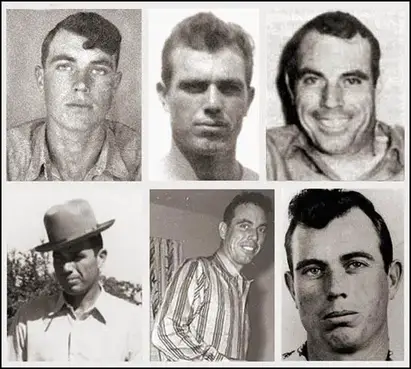
“Contradictory and worthless” was the description given by Assistant Warren Counsel Wesley Libeler regarding Mrs. Markham’s testimony. “The Commission wants to believe Mrs. Markham and that's all there is to it," added staff member Norman Redlich.
“She’s an utter screwball,” remarked Counsel Joseph Ball.
Markham had fainted more than once at the scene, her behavior was described as hysterical, and she later was administered smelling salts by the police before viewing a four-man downtown lineup. Although Markham was said to have identified Oswald, her later testimony put that ID much in doubt. Before the Warren Commission Mrs. Markham repeatedly said she didn’t know anybody in the lineup and didn’t recognize anyone. She didn’t pick the “Number Two Man” by his face, but rather because the man’s looks gave her chills.
“A rather mystifying identification,” quipped Warren Commission critic Mark Lane.
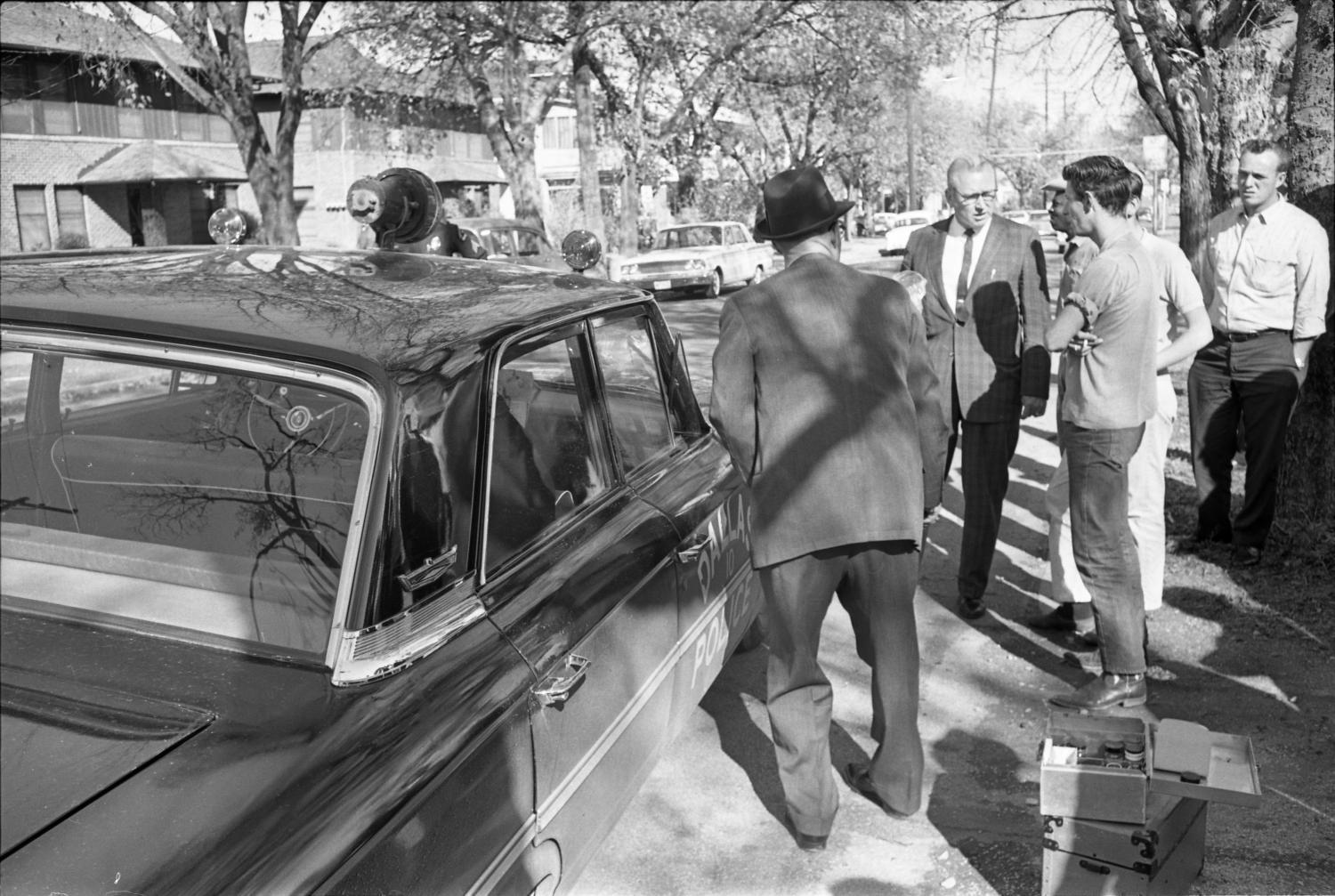
Mrs. Markham was never closer than about 90 feet to the gunman.
My own research has shown that Mrs. Markham’s story does not square with her stated timeline nor sightlines. The trim and fit waitress was hurrying to catch a bus, not standing idly on the northwest corner of 10th & Patton watching as this drama unfolded. Markham should’ve already been past that intersection and headed for her bus by the time the killer shot Tippit.
Bill Scoggins
Cab driver William Scoggins was sitting in his vehicle just before the stop sign at the southeast corner of 10th & Patton when the shots rang out. While eating his lunch, Scoggins had observed Tippit’s patrol car roll slowly through the intersection headed east. Some 100 feet from the corner, Tippit stopped and tooted his horn, beckoning a young pedestrian on the sidewalk to approach the car. Once the young man went to Tippit’s car, he disappeared from Scoggins’ view because of some hedges. Scoggins was positive that the young man had never passed in front of his cab, walking east. So, the pedestrian must have been walking west, although the witness thought he might have been in the process of turning around when beckoned by the policeman.
Suddenly, several shots rang out in quick succession. “They was fast,” the witness would later recall. A surprised Mr. Scoggins dropped his lunch and watched as a young man carrying a pistol came striding across the corner property’s lawn, directly adjacent to his cab. Scoggins scrambled from his cab but saw no avenue of easy escape. Hunkering down behind his cab’s driver side fender, the WWII veteran watched as the young man jumped through the hedges, ignoring his taxi, and proceeded south on Patton.
Scoggins thought he heard the gunman mutter either “Poor dumb cop” or “Poor damn cop.”
At a Saturday police lineup, Scoggins picked Oswald as the man he saw crashing through the hedges and carrying a pistol. However, cab driver William Whaley, who attended the same lineup as Scoggins to identify Oswald as the man he drove to Oak Cliff shortly after the assassination, made an interesting observation about this hastily arranged police procedure. This is what Mr. Whaley told the Warren Commission:
Then they took me down in their room where they have their showups, and all, and me and this other taxi driver (Scoggins) who was with me, sir, we sat in the room awhile and directly they brought in six men, young teenagers, and they all were handcuffed together. Well, they wanted me to pick out my passenger. At that time he had on a pair of black pants and white T-shirt, that is all he had on. But you could have picked him out without identifying him by just listening to him because he was bawling out the policeman, telling them it wasn’t right to put him in line with these teenagers…He showed no respect for the policemen, he told them what he thought about them. They knew what they were doing and they were trying to railroad him and he wanted his lawyer.
By Saturday November 23rd just about every functioning adult in the Dallas metro area knew that shots had allegedly been fired from the Texas School Book Depository. Lee Harvey Oswald had already been announced as the suspect, and his face had been shown on television. During the lineup, while police employees standing in had been allowed to give false names and occupations, Oswald stated his correct name and identified himself as an employee of the Texas School Book Depository.
Worse yet, Scoggins later admitted to the Warren Commission he was not able to pick out Oswald during a separate photo lineup. Scoggins said that he was shown photos of different men by either an FBI or Secret Service agent.“ I think I picked the wrong one,” the cab driver testified. “He told me the other one was Oswald.”
Jack Tatum
Purported witness Jack Tatum never participated in a police lineup in 1963. That is because Mr. Tatum never came forward until almost 15 years later when the House Select Committee on Assassinations (HSCA) was convened in the late 1970s to reinvestigate the JFK case. By the time the HSCA was empaneled, the credibility of Mrs. Markham’s version of events had reached near zero — and Markham had been the only witness to say she saw the gunman shoot Tippit. Tatum told an incredible new story, how he had been driving west on E. 10th Street and saw a young white man, hands in jacket pockets, leaning over to speak with a Dallas police officer through the passenger side window or vent of the patrol car. As Tatum proceeded to drive past the squad car and into the intersection of 10th & Patton, he heard three loud bangs. Tatum hit the brakes and came to a stop in the intersection. Looking through his rearview mirror, Tatum saw the officer lying in the street, and watched as the gunman walked to the back of the police car, stepped into the street, and proceeded to walk around the trunk and up the driver’s side. When the gunman reached Tippit’s prone body near the front of the vehicle, he leaned over, took aim, and fired a fourth shot point-blank, execution style (supposedly the shot that went through the victim’s temple). The gunman then retraced his steps, stepped back onto the curb and onto the sidewalk, and then strode quickly west to make his escape.
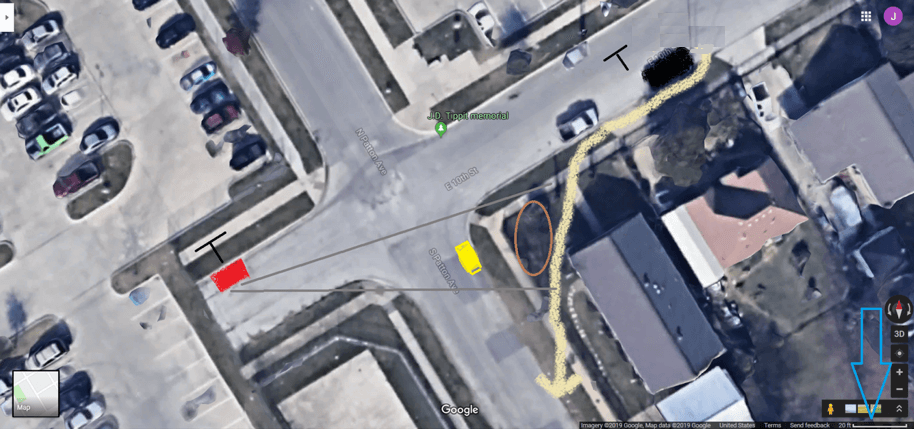
Strangely, Tatum said that he later decided to drive back to 10th & Patton to help poor Mrs. Markham, and that he drove Markham to the police station to give her statement. Only problem is, Dallas Police records show that Officer George Hammer drove Helen Markham to DPD headquarters, not Tatum. Dallas Police were not about to let their “star” witness, and only witness to the shooting itself, out of their sight until she could give a statement and attend a lineup.
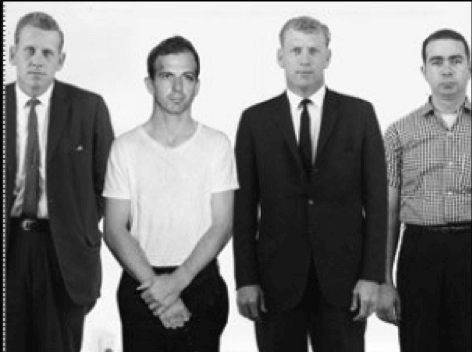
While driving his car west on E 10th Street and re-creating his alleged view of the Tippit murder, Tatum told his interviewer how he passed the stopped police car, saw the pedestrian and policeman conversing, and then heard three gunshots as he entered the intersection at 10th & Patton. As Tatum, and Myers, continue his story, this is the capper: the gunman completely circled the police car to fire a fourth shot point-blank into Tippit’s skull.
The problem with Tatum’s story is that while the other eyewitnesses disagreed as to exactly what they saw, no one else disagreed much as to what they heard. While the number of shots is in dispute, every “earwitness” agrees that the shots were fired in rapid succession. There was no final shot separated by seconds from the initial shots.
Witness after witness described Tippit as being killed by a fusillade of shots. They all heard basically the same thing: Pow pow pow pow.
“They was fast,” remarked cabdriver Bill Scoggins, describing how the shots were fired extremely close together, in rapid succession.
What Jack Tatum said he saw, in all probability, never happened. Why he said it can be left to the reader’s imagination. But the HSCA bought it. Because they now had a new “eyewitness” to the actual shooting, and that person’s name was not the thoroughly discredited Mrs. Helen Markham.
Next, Tatum said that the killer came within 10-15 feet of his Ford Galaxie, and that man was Lee Harvey Oswald. Tatum claimed he could tell because the corners of the man’s mouth turned up into a distinctive smile. Sounds convincing, right? But a quick check of the murder scene and known escape path of the gunman shows clearly that the gunman never came closer than 100 feet to Jack Tatum. Tatum was also well over 100 feet away from Officer Tippit — and according to Tatum himself he was watching everything through his rearview mirror.
Why did PBS Frontline let Tatum get away with making such outrageous claims? How could Tatum possibly have seen the gunman’s lips curl up from that distance? The gunman came to within 10-15 feet of Tatum’s Ford Galaxie…seriously? That was your story, Mr. Tatum, and you were sticking to it?
Witness Domingo Benavides seemed to remember a newer red car, possibly a red Ford Galaxie, traveling west several car lengths ahead of his pickup truck. But no one remembered having seen Jack Tatum at 10th & Patton. He was like a late arriving apparition: 15 years after the fact, telling a bizarre and likely false narrative. Yet it was accepted by the HSCA because it helped tie up many inconvenient loose ends left by the Warren Report. And PBS Frontline, a program that showcases documentary facts, didn’t bat an eye and never challenged a word.
Barbara and Virginia Davis
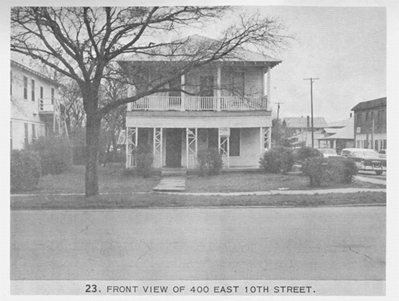
The two testified they were awakened suddenly from a nap by what the women perceived to be at least two gunshots in quick succession. Barbara and Virginia, understandably confused, both ran to the front door that opens facing East 10th Street. Through the screen door they soon witnessed a young man cutting through their front yard, seemingly unloading a handgun held in his right hand. As the man continued walking past their door, the sisters heard a woman shouting and pointing farther east on 10th Street, “He’s dead, he’s dead, he’s shot!” They would identify the person as Helen Markham, with whom Barbara was acquainted. The woman yelled for someone to call police, and Barbara quickly made the call.
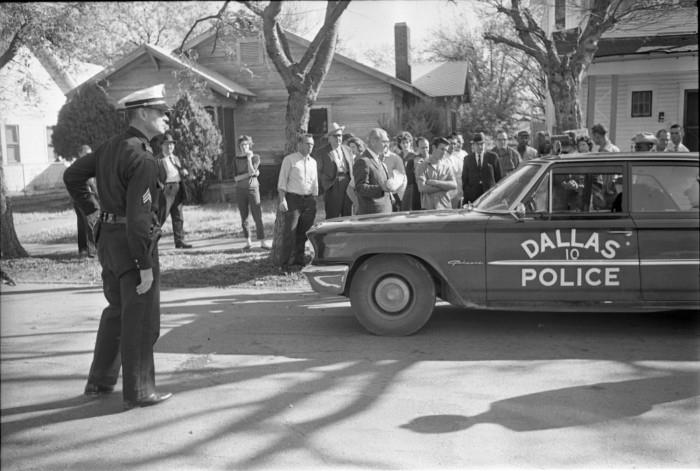
The younger Davis woman said she could not have made a positive ID based on the images of the suspect she saw on television — only from the lineup, and only from the profile view. This, of course, had been one of the lineups where the disheveled and bruised Lee Oswald had chided the police for trying to “railroad” him and berated the cops in front of the witnesses.
Virginia Davis testified to two very strange things. First, she said that Officer Tippit’s patrol car was, “…parked between the hedge that marks the apartment house where he lives in and the house next door.” Why did Davis think J.D. Tippit lived at the house two doors away? Why did other witnesses also mention seeing Tippit in the neighborhood regularly when that was not his usual beat? Also, when asked how quickly the police arrived at the murder scene, Mrs. Davis answered in an amazing way: “Yes, they was already there.” “By the time you got out there?” the lawyer for the commission asked. “Yes, sir. We stood out there until after the ambulance had come and picked him up.”
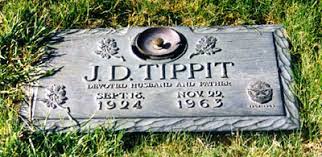
Barbara Davis’s testimony was more succinct, as she seemed to get more of the basic details correct. However, Barbara testified that the shooter had worn a dark coat made of a rougher fabric, such as wool. This was in stark contrast to what all the other witnesses had described, including Barbara’s sister-in-law. She also remembered the killer’s shirt as being much lighter than Oswald’s shirt…which is interesting because Oswald wore his white undershirt at the lineup and not the brown, buttoned-down long-sleeve shirt he had been wearing all day since he left for work in Fort Worth with Wesley Buell Frazier. At one point Barbara says she was inside the house holding the screen door when she watched the suspect cut across her front lawn. Later she tells investigators she was standing on her front porch as the killer passed by. The older of the two Davis sisters-in-law also agreed that she had only seen the killer from the side, the profile view.
Finally, Mrs. Davis described how she and Virginia each found one shell. It was later that afternoon on the side of their house that faces Patton Avenue. These would have been tossed after the gunman jumped through the hedges and had passed Bill Scoggins’s cab — but before he had reached the location of witnesses Ted Callaway and Sam Guinyard farther south on Patton.
Ted Callaway and Sam Guinyard
When shots were fired on E. 10th street, two of the employees of nearby Harris Motor Company, whose used car lot faced Patton Avenue north of Jefferson Boulevard, moved quickly to the sidewalk on Patton. Their attention turned north towards E. 10th Street. Callaway was the car lot’s manager, and Guinyard was a porter who washed and detailed cars.
As Callaway and Guinyard watched, they observed Bill Scoggins hunched over and pressed against the driver’s side fender of his cab. Suddenly, a young white man carrying a pistol came crashing through the hedges. Paying no attention to the cab, the gunman headed south on the east sidewalk of Patton towards where Callaway and Guinyard were standing, wondering what the excitement was all about. Guinyard observed the young man toss what was the fourth of the four spent shells towards the side of Virginia Davis’s apartment.
As the gunman realized Callaway and Guinyard had stepped out and were now blocking his escape route, the young man crossed the street and proceeded south on the west side of Patton.
“Hey, man!” Callaway shouted to the killer as he was almost even with the two Harris Motors employees. “What the hell’s goin’ on?”
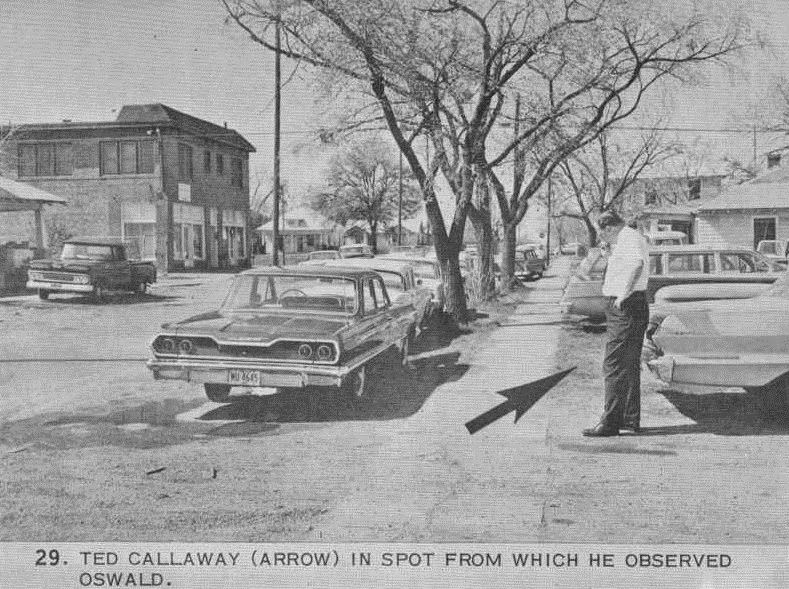
Other people were beginning to come out. So the killer picked up his pace and trotted quickly towards the intersection of Patton and Jefferson.
“Hey, somebody follow that guy!” Callaway called down the street. Callaway then turned and hurried in the opposite direction towards 10th Street. Once up at the corner, the Harris Motors manager could see Tippit lying motionless on the ground and a crowd starting to form. Callaway went to the patrol car and tried to summon help on the radio, but was unsuccessful. A motorist named T.F. Bowley, who knew how to work the radio, would stop seconds later and summon help. Meanwhile, someone had already picked up Tippit’s service revolver, which had been lying on the street partially beneath his body, and placed it up on the squad car. Domingo Benavides, who worked as a mechanic at Harris Motors, was telling Callaway what he had just witnessed from his pickup truck.
Frustrated, ex-serviceman Callaway picked up Tippit’s revolver and told Bill Scoggins to quick get his taxi — he and Scoggins would drive off from 10th & Patton in search of the officer’s killer. It is then that Callaway would ask Harris Motors employee Benavides a question that would continue to puzzle JFK researchers to this day.
“Which way did he go?”
If Callaway and Guinyard had just observed the gunman run past their position on Patton Avenue and turn west onto Jefferson Boulevard, why would the car lot manager need to ask Benavides which way the killer had fled?
Callaway and Scoggins did search the neighborhood, but failed to locate the gunman. They soon returned to the murder scene at 10th & Patton to surrender Tippit’s revolver to arriving Dallas police officers. Years later, Scoggins would confess to an interviewer that he had stashed a .32 caliber handgun in his glove box for protection, but had totally forgotten about the weapon during the entire harrowing ordeal.
“I just couldn’t believe what I was seeing,” the cab driver remarked as way of explanation.
The FBI later took measurements on Patton Avenue and determined that the gunman had passed by some 55 feet from Callaway and Guinyard at the closest. Both men would later identify Lee Oswald as the man they had seen carrying the pistol, Had Oswald stood trial for Tippit’s murder, Mr. Callaway would perhaps have made the most convincing witness for the prosecution. In later interviews, the loquacious and confident manager expressed no doubt about his ability to positively identify Oswald as the person who had murdered J.D. Tippit.
However, during a 1986 televised mock trial held in London, England — The Trial of Lee Harvey Oswald —star defense lawyer Gerry Spence cross-examined Ted Callaway on the witness stand. As Spence tried to introduce doubt concerning the Harris Motors manager’s ability to positively ID a running gunman glimpsed from more than 50 feet away, Callaway scoffed at Oswald’s “counsel” and reiterated that the accused assassin was the man he saw running from the Tippit murder scene with gun in hand. Spence appeared to be ready to dismiss the witness, then asked Callaway if he would kindly answer one more question.
“Can you identify the man in this picture?” Spence asked Callaway.
Suddenly, a black & white photograph appeared on the courtroom screen for everyone to see. It was a blown-up copy of a photograph taken by a news photographer at the moment of the assassination of JFK in Dealey Plaza. In the background the Texas School Book Depository can be clearly seen, along with some onlookers standing in the entranceway.to the TSBD. The image of one of the onlookers is enlarged:
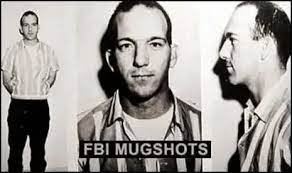
“Why…why that’s a resemblance of Oswald!”
“No further questions,” smiled Gerry Spence, knowing he had just elicited the exact response from the witness he had sought. Callaway had just confused the image of Oswald’s fellow TSBD co-worker Billy Lovelady for that of the accused assassin Lee Harvey Oswald.
The implication of Ted Callaway’s misidentification of the so-called Altgen or “Door Man” photograph was obvious…
Warren Reynolds
Perhaps the most fascinating experience of any Tippit witness was that of car salesman Warren Reynolds. Reynolds sold automobiles for the lot across Jefferson Boulevard from Harris Motors where Domingo Benavides, Ted Callaway, and Sam Guinyard all worked. Like Callaway and Guinyard, Reynolds also heard the gunfire from up on 10th Street. He emerged from his office onto a second-floor balcony to see what the matter was. Reynolds observed a young, average-sized white man running down Patton Avenue with a gun in hand. Acting quickly, Reynolds hustled downstairs and onto the lot owned by Johnnie Reynolds Motor Company.
As the suspect turned west onto Jefferson Boulevard, Reynolds (the owner’s brother) and some other employees from the used car lot followed the man by running down the south side (or opposite side) of the wide thoroughfare from the gunman. The gunman stuck his pistol in the waist band of his trousers and continued west. Reynolds said he and his fellow employees lost sight of the suspect when he appeared to duck behind some buildings.
Later that day, Warren Reynolds gave statements to both the news media and Dallas Police regarding what he had witnessed. It was Reynolds’ opinion that he had seen and followed Officer Tippit’s killer, but that Reynolds was never close enough to the gunman to have possibly made a positive identification. The car salesman was interviewed by the FBI in January 1964, at which time he told the FBI that he could simply not make a positive ID on Oswald. Two nights later, someone sneaked into the dealership’s basement with a rifle and waited for Reynolds to come downstairs to shut off the lights at closing. Despite suffering a gunshot wound to the head, Reynolds miraculously survived the vicious attack. In fact, his eyesight suddenly approved, as he now informed authorities that he could identify Oswald as the man he had seen across Jefferson Boulevard fleeing with a gun.
Dallas PD’s main suspect in Reynolds’ near fatal shooting was a local hoodlum named Darrel Wayne Garner, aka Dago. Garner was a known associate of nightclub owner Jack Ruby, and his girlfriend danced at Ruby’s club. Garner’s girlfriend would soon die under mysterious circumstances in a Dallas jail cell, allegedly committing suicide by hanging herself with her pants.
Dallas JFK researcher Michael Brownlow caught up with Warren Reynolds decades after the assassination and Tippit’s murder. The Warren Commission witness who identified Oswald as the man he had seen carrying a pistol on Jefferson Boulevard was asked why he had changed his story by the time he testified for the committee.
“Because I wanted to live,” Reynolds replied.
Acquilla Clemons, Frank Wright, and Doris Holan
Three witnesses who were ignored by Dallas Police and never testified before the Warren Commission were Acquilla Clemons, Frank Wright, and Doris Holan. These people told very different stories than the official Warren Report witnesses.
Mrs. Clemons was taking care of an elderly client in a house on E. 10th Street just west of the intersection with Patton Avenue. Clemons saw the police car stop on the next block but said there were two persons in the vicinity of Tippit’s patrol car, not just the man who spoke with the officer.
After Clemons had stepped back into her client’s home, she heard gunshots. Hurrying back outside, Clemons saw Officer Tippit lying on the ground next to his squad car and two suspicious people running away in opposite directions. One man was tall and slender, while the other man she described as short and chunky. The shorter man was reloading his pistol and escaping south on Patton Avenue. Clemons said this man was not Lee Harvey Oswald.
Frank Wright lived at the corner of E 10th & Denver, just east of where Tippit was slain. Wright said he was standing in his living room near the front door when he heard the gunshots. Wright opened the door and stepped onto his porch, just in time to see Tippit’s body roll over and come to rest in the street. Next Mr. Wright observed a man running west from the police car. This man jumped into the driver’s seat of an old, grey coupe and drove away going west on E. 10th. A second man in a long-sleeved coat, possibly a trench coat, then stepped into the street. The man appeared to be standing over Tippit, looking down. This second individual then returned to the sidewalk and disappeared out of sight onto one of the properties on the south side of the block.
Doris Holan lived in a second-floor apartment directly opposite the scene of Tippit’s murder. Her front window afforded the Dallas hotel employee a commanding view of the tragedy. Just after 1 o’clock Holan, who had been sitting in a chair smoking a cigarette, heard the gunshots. Startled, Holan dropped her cigarette but picked it up and put the cigarette on an ash tray. She then hustled to her front window and pulled back one side of the curtain. Holan saw a young man who looked similar to Oswald beginning to walk west away from Tippit’s police car. The movement of Holan’s curtain caught the attention of the suspect as he began to walk away, because he paused for a moment and looked up at Holan’s window, then turned again and began hurrying toward Patton. Holan next saw a police car roll forward from the alleyway behind 10th and move towards the street using a narrow driveway between the two houses. A man in a long coat got out, stepped into the street, looked down at Tippit’s body, then walked back up the driveway to the police car. The second police car then backed up out of sight into the rear alleyway. Holan knew this was a police vehicle because she could see the “cherry” on top. (Although Dale Myers has tried to discredit Holan, as Tom Gram has shown, he has not succeeded. Click here for that discussion)
Patton Avenue witness Sam Guinyard would later confide to researcher Michael Brownlow that he too had seen police activity in that alleyway at about the time Tippit was killed. The car lot where Guinyard worked sat adjacent to E 10th Street’s rear alleyway. The problem is, according to Dallas Police records, no other Dallas police were known to be in that immediate vicinity.
Summary
The witness testimony in the Tippit murder case is so confusing and contradictory that it tends to exonerate Lee Oswald as much as it implicates him. Most witnesses were either too far away or had only a fleeting glimpse of the killer to make a solid identification. Oswald was wearing a long-sleeved brown shirt that day, which no one in the vicinity of 10th & Patton remembered seeing. When we factor in the tainted police lineups as well as the seemingly impossible time element in getting Oswald to the crime scene in time to be the shooter, the case against the 24-year-old tends to fall apart. The Dallas Police Report had the killer walking west, not east, as did all that day’s witnesses except for the roundly discredited Mrs. Markham. Someone other than Lee Harvey Oswald almost assuredly killed Officer Tippit.
There can be little doubt that a person or persons unknown impersonated Lee Oswald leading up to the murders on November 22, 1963. How can anyone be positive that Lee Oswald shot Tippit at just after 1 p.m. when so many factors argue against it?
Meanwhile, two credible witnesses at the Texas Theater put the real Lee Oswald in the movie theater at the time J.D. Tippit was being slain several blocks to the east. We know the real Lee Oswald was in the movie theater because he was soon arrested there. Patron Jack Davis said Oswald was there at about the time the 1:15 movie began, and was oddly moving from seat to seat, as if looking for someone. He even briefly sat next to Davis. Theater manager and ticket-taker “Butch Burroughs” said Oswald came in between 1:00 and 1:07 p.m., and that he sold popcorn to Lee Oswald at nearly 1:15 p.m. If true, how could Lee Oswald have murdered J.D. Tippit?


